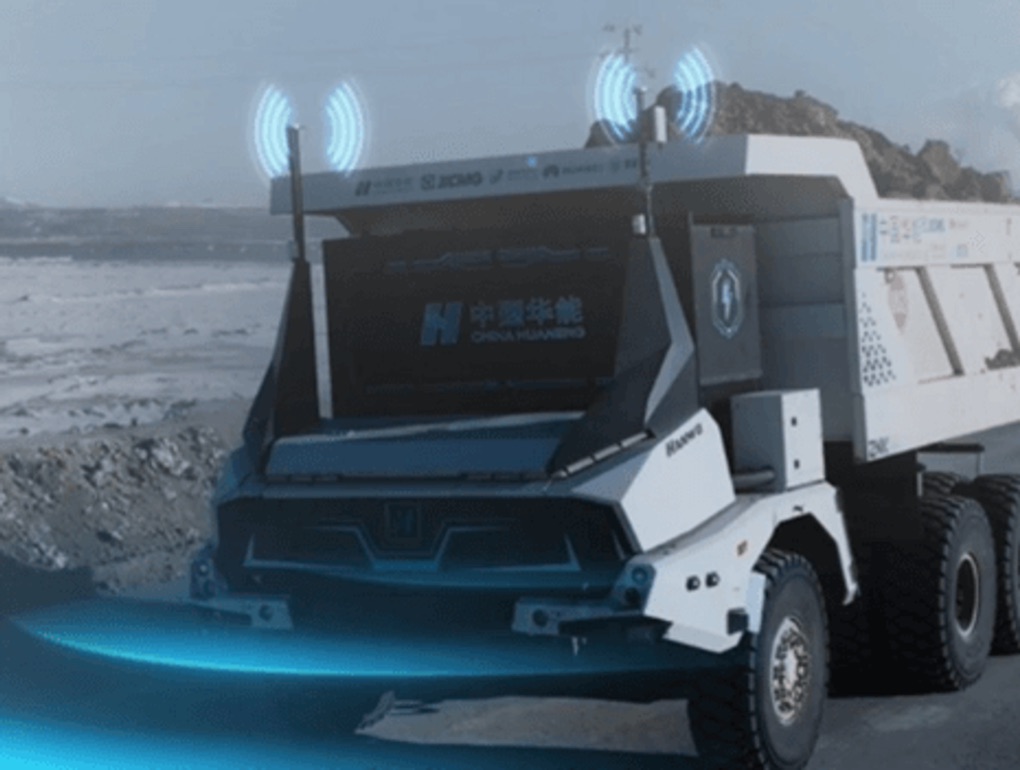China’s information and communications technology giant Huawei released its 2024 Annual Report this week, which had some interesting reading about the company as a whole and its offering to the mining sector. AI was a major theme in the report, which stated: “Driven by AI, networks are evolving with
upgrades in capacity, latency, and architecture, paving the way for all industries to enter the age of All Intelligence.”
For the past three years, Huawei has invested more than 20% of its annual sales revenue back into R&D to ensure the competitiveness of its products and solutions. Through these efforts, it says it wants to build more open and easier-to-use platforms, support a wide range of AI models and applications, and create greater value for customers.
Specifically in mining Huawei said it has now worked with partners to apply its Pangu mining models to more than 100 mining scenarios. These applications are already being applied in more than 60 mines. The Pangu mining model is an intelligent industrial production platform based on AI large models, which addresses the difficulty of applying AI in the mining industry. It facilitates the wide adoption of AI solutions and intelligence upgrade in the mining industry. The models’ two-level architecture decouples operation management and intelligent production, which boosts management and production efficiency. The central cloud focuses on operation management, data sharing, AI development, training, and unified model management. The edge cloud carries AI inference and applies the results to intelligent production.
In 2024, the company launched Pangu Models 5.0, which have been fully upgraded to deliver competitive capabilities including full coverage of specifications, multiple modalities, and powerful reasoning. Pangu Models 5.0 include different sized models that can be adapted to different business scenarios and better
integrate the digital and physical worlds. This helps more customers tackle the most challenging issues they face in specific industry scenarios, including in mining.
Huawei has also continued to drive innovation in MineHarmony, with 110 partners and 420 types of equipment certified by China’s National Key Laboratory for MineHarmony. MineHarmony is an operating system designed for building fully connected intelligent mines. MineHarmony-based Mining IoT platforms use sensing technology to ensure consistent data standards at data sources and enable synergy among multiple systems.
On the terminal side, MineHarmony enables the upgrade of both old and new sensors, equipment, and portable devices, supporting interconnectivity, synergy, and collaboration between different types of terminals. On the network side, MineHarmony supports smooth data transmission to the cloud through reliable and efficient integrated mining networks built using 5G, F5G, and Wi-Fi 6 technologies.
Huawei has helped one customer build China’s first underground coal mine with one network supporting all services. This network operates stably, even at 900 m below ground. The technology used in this solution has since been included in the General Technical Specifications for Integrated Coal Mine Information Bearing Network released by China’s National Energy Administration.
It has also launched a new industrial Internet platform for mining which now supports more than 50 intelligent mining projects. In addition, the Huawei MetaWorks Digital Twin Platform has helped more than 50 mining companies go intelligent.
Huawei says it has helped customers achieve stable remote control and autonomous driving at open-pit mines in extreme weather conditions such as those on high plateaus and in deserts. At the Mobile World Congress 2025 in Barcelona, attended by IM, Ellick Chen, Huawei VP of its Oil, Gas & Mining BU gave some good examples in a presentation of its rapid progress in the autonomous haulage system space, where it is a relative newcomer.
For example, at Huaneng Group’s Yimin coal mine in Inner Mongolia, Huawei has deployed its technology on 100 autonomous and cabless battery electric haul trucks in 2024 – the first of their kind in China. The trucks are the innovative ZNK95 model developed by XCMG. This fleet is also notable for using battery swapping technology. In high plateau mining, 10 autonomous Tonly trucks using Huawei technology are also operating at Zijin Mining’s Julong copper mine in Tibet at over 5,000 m with contractor China Railway. These are just two of a number of Huawei’s AHS project examples.
The post Huawei’s vision and progress in mining – from AI to autonomous driving appeared first on International Mining.

